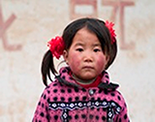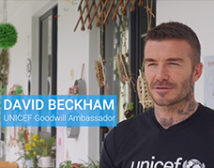‘Children living in poverty experience deprivation of the material, spiritual and emotional resources need to survive, develop and thrive, leaving them unable to enjoy their rights, achieve their full potential or participate as full and equal members of society.' Ending child poverty is not only morally a global priority: it is a route to tackling broader poverty. It is critical for achieving equitable and sustainable human development.
Children are more vulnerable to poverty than other age groups. They experience poverty differently to adults/other household members and their needs vary at different ages. Investing during critical periods, particularly in early childhood, is crucial to combat child poverty. Time-sensitive processes of development/maturation mean that the outcomes of child poverty are profound, long lasting and irreversible, e.g. malnutrition in early years prevent development of essential brain connections for learning, adversely affecting education and, later in life, earning potential. Therefore, reaching children at the right time with the right things is critical. Integrated early childhood development yields massive long term returns on investment.

In China, the number of children living in poverty-stricken areas (832 counties in total, including “key poverty counties” and counties in “poverty blocks”) was estimated to be 70 million, accounting for about 25% of the child population nationwide. They are facing multi-dimensional deprivations.
According to the 2010 census, children in poverty-stricken areas lagged behind other children in terms of health level, enrolment in or completion of compulsory education, and household water and sanitation conditions. In poverty-stricken areas, the mortality of children at each age was higher than the national average by 50% or more. In about half of the age groups, this figure was higher than the national average by 80% or more. About 5% of children in poverty-stricken areas failed to receive or complete compulsory education, which was higher than the national average by about 2 percentage points. In poverty-stricken areas, only 64% of children lived with both parents, which was lower than the national average by 6 percentage points. For children in poverty-stricken areas, household latrine coverage was 55% (compared to a national average of 71%) and piped water coverage rate was 40% (compared to a national average of 61%). In addition, the poverty-stricken counties had a higher proportion of left-behind children, and early marriage and early childbearing among young people aged 15-19 were relatively more prevalent. In addition, one report released by the World Bank reveals that girls below 16 face a significantly higher risk of poverty relative to boys below 16.
Collaboration between UNICEF and the State Council's Leading Group Office of Poverty Alleviation and Development (LGOP) focused on child poverty measurement in China and local-level pilot schemes addressing multiple dimensions of child deprivation. These initiatives contributed to the State Council's inclusion of the child poverty concept in China's new Ten-Year Rural Poverty Reduction Strategy (2011-2020). Importantly, the strategy provides a basis for the planning and budgeting for child poverty at national and local levels.
You can help children in poverty receive equal access to social services. Take action in your own community by learning more about whether children in need of public assistance are able to access necessary benefits and services. Or find out how you can support UNICEF's work today.





























